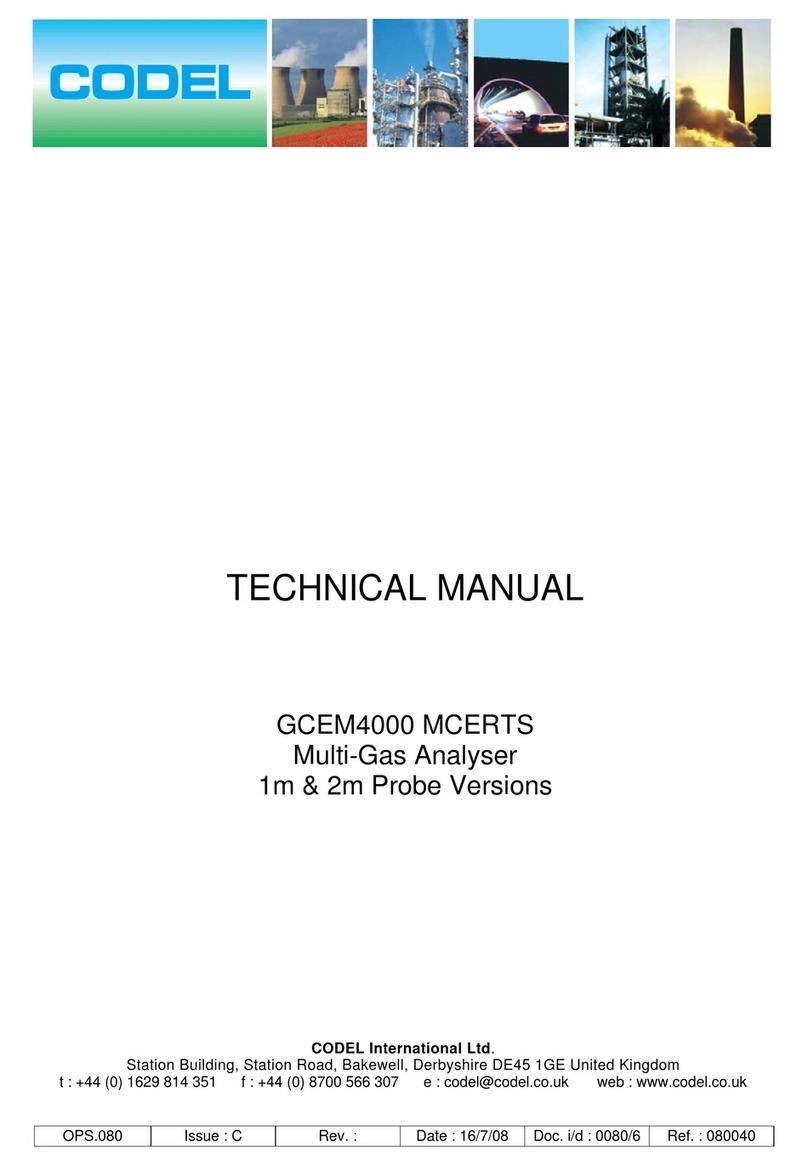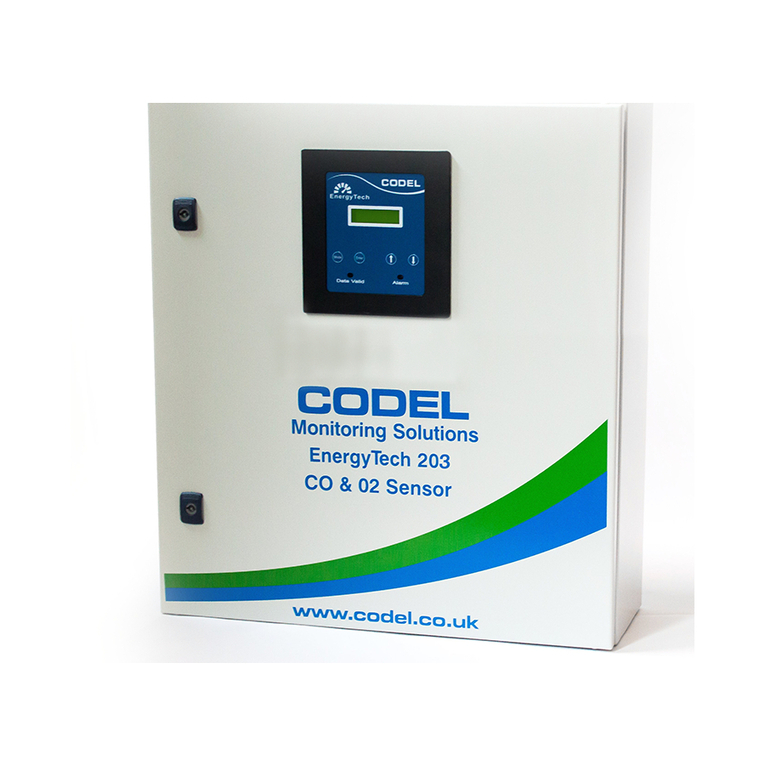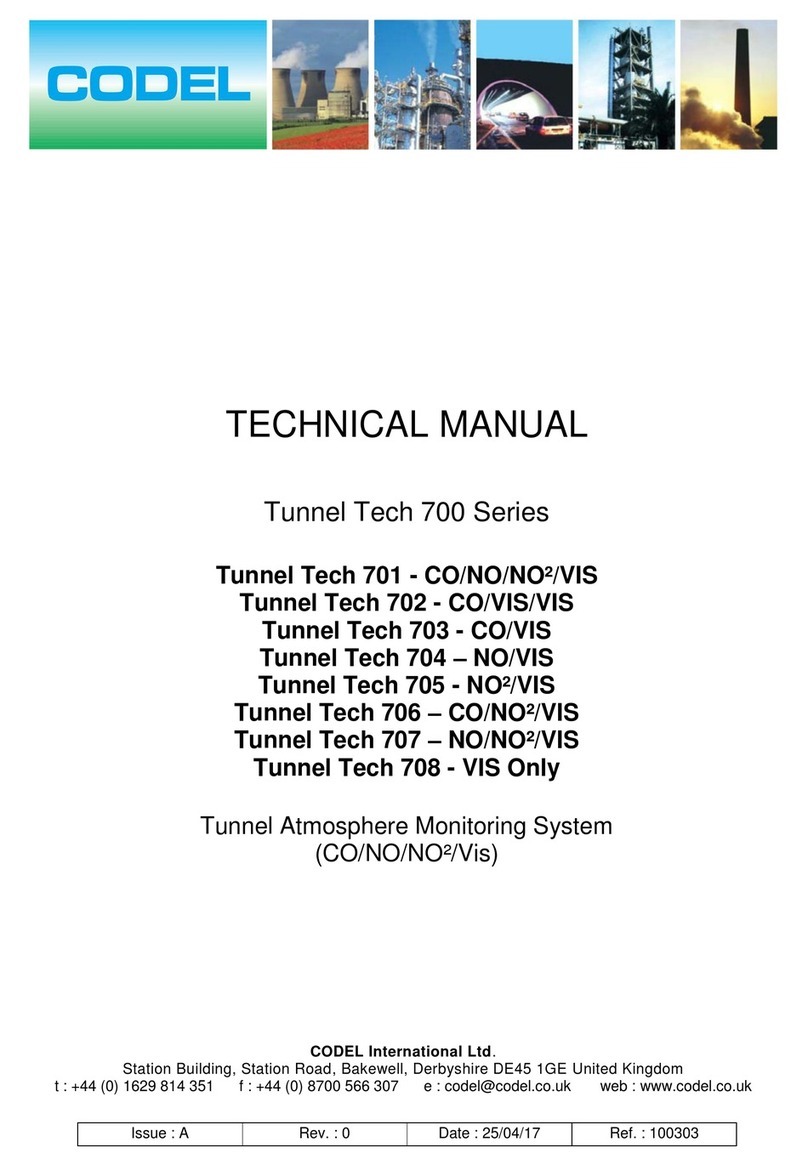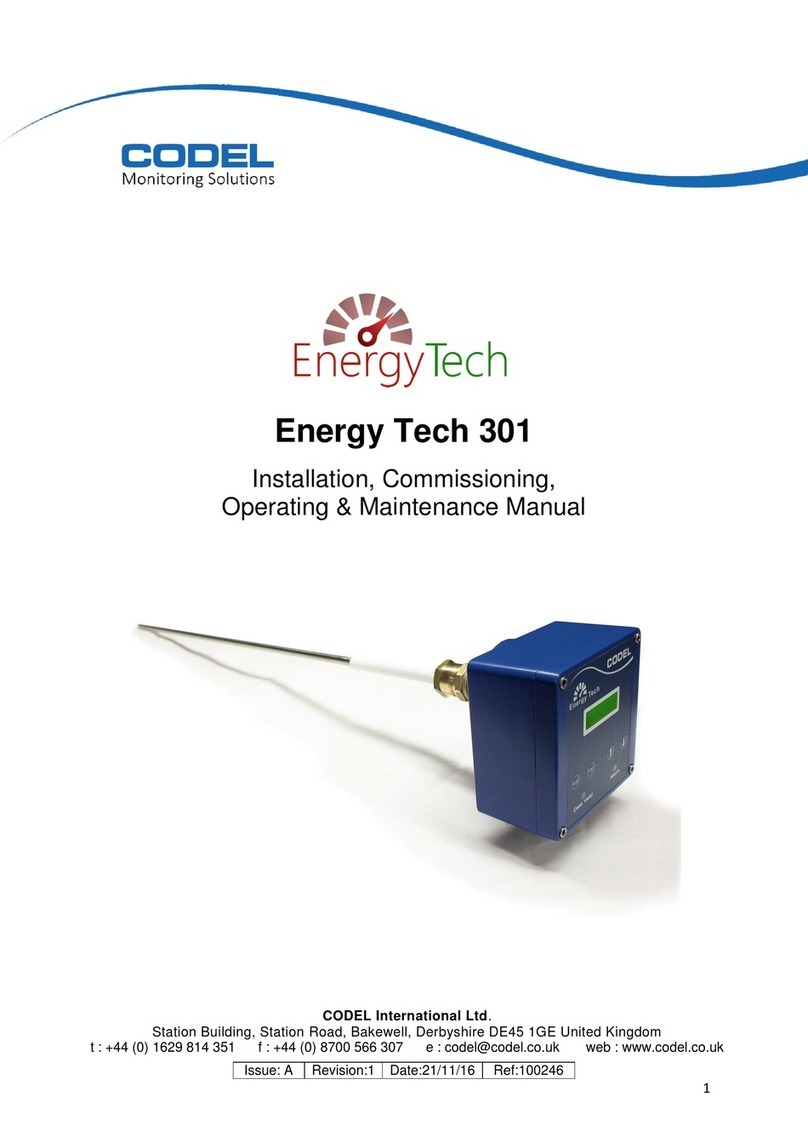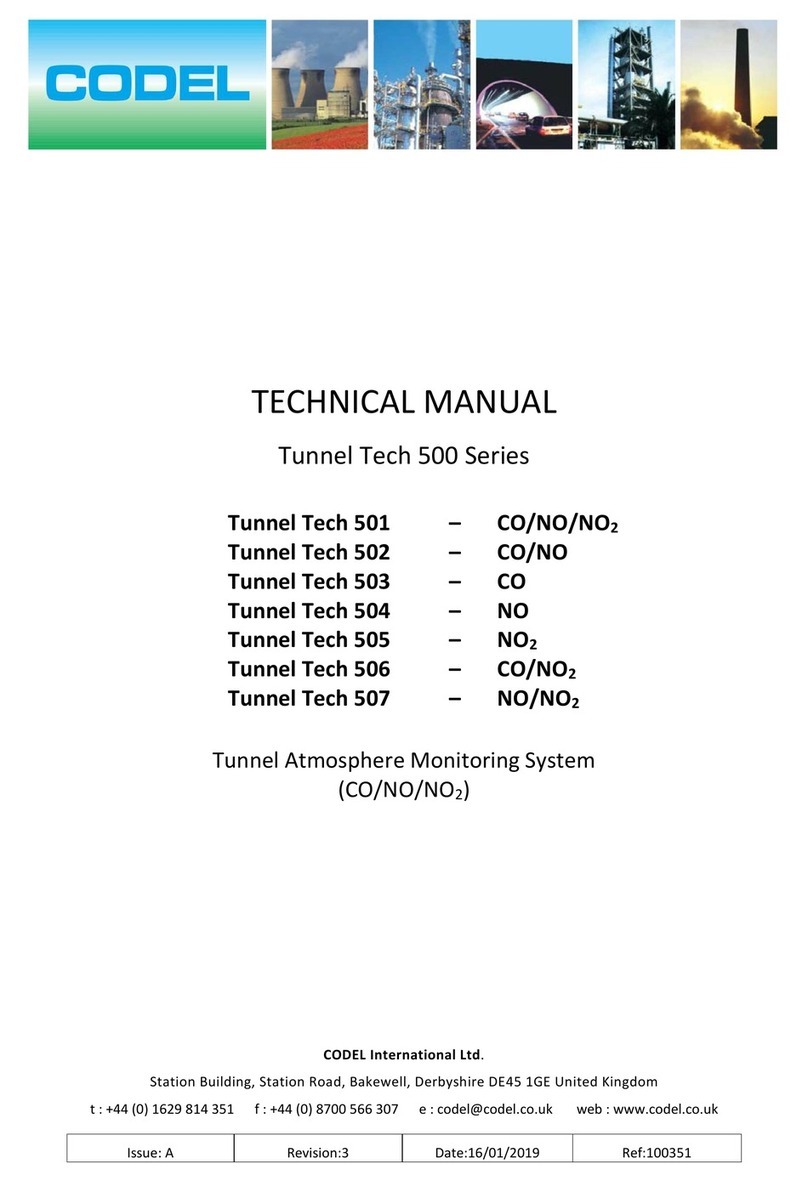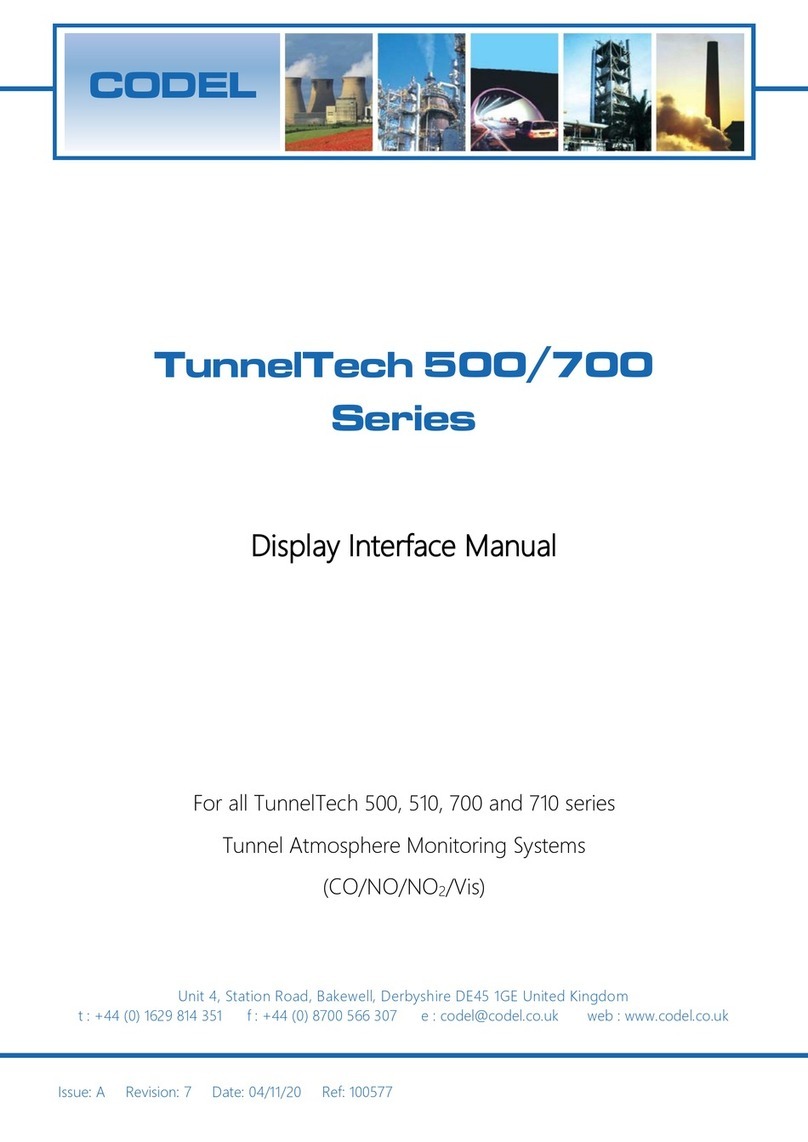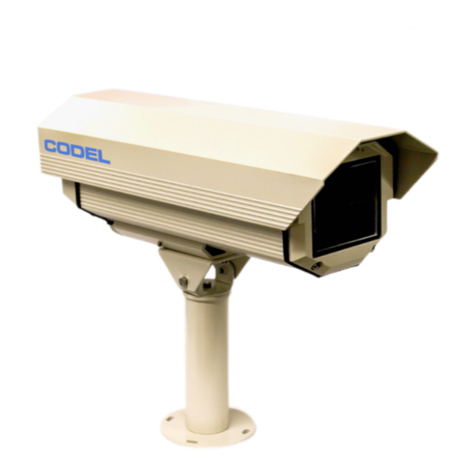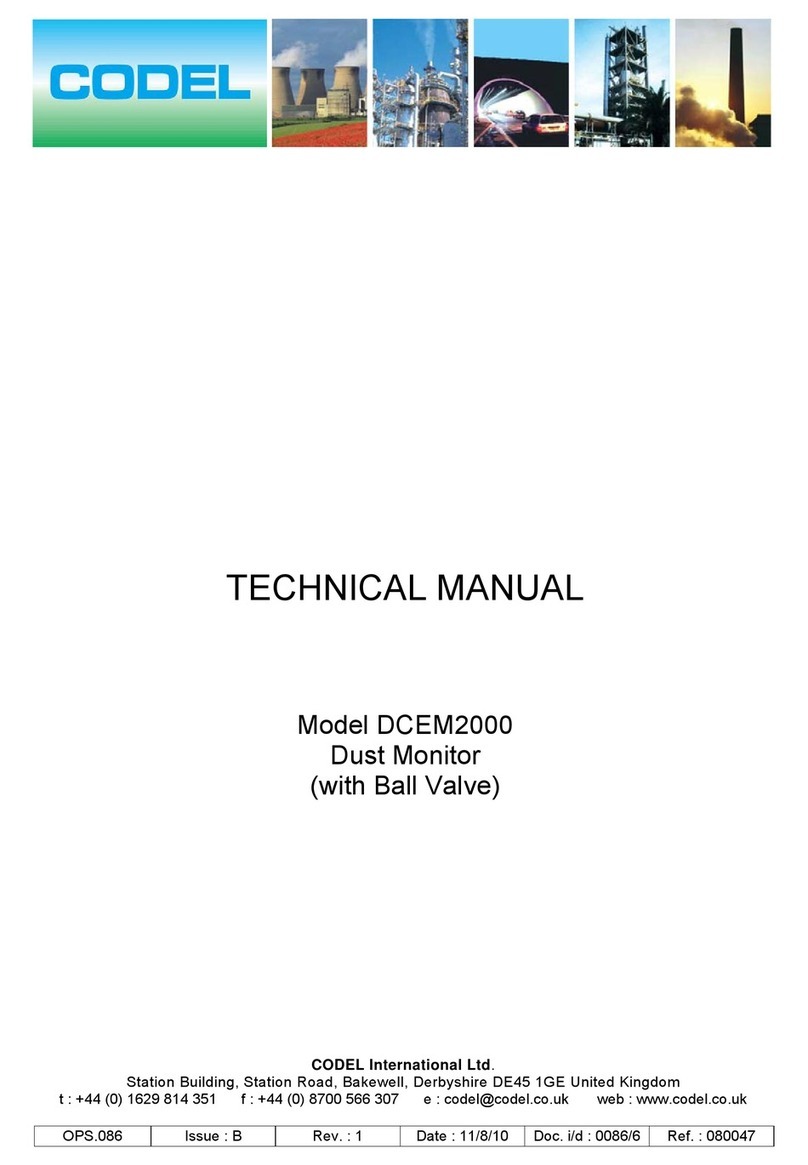
Issue: A Revision: 1 Date: 24/07/19 Ref: 100606
Operating and Maintenance Manual Monitoring Solutions
DETECTOR LEVELS................................................................................................................................................ 47
4.6.1 Receiver Gain Adjustment...........................................................................................................................47
4.6.2 Signal Processor Gain Adjustment ........................................................................................................... 49
TRANSMITTER ADJUSTMENTS ................................................................................................................................51
OPERATING PARAMETERS .................................................................................................................................... 52
TABLE 1–INSTRUMENT SETTINGS ........................................................................................................................ 66
CURRENT OUTPUT CALIBRATION ......................................................................................................................... 68
5NORMAL OPERATION......................................................................................................................................69
INTRODUCTION......................................................................................................................................................... 69
5.1.1 Measurement............................................................................................................................................... 69
5.1.2 Calibration.................................................................................................................................................... 69
NORMAL START-UP PROCEDURE......................................................................................................................... 70
MODES OF OPERATION ....................................................................................................................................... 70
KEY OPERATION................................................................................................................................................... 72
5.4.1 Mode Key.......................................................................................................................................................72
5.4.2 Arrow Keys.....................................................................................................................................................72
5.4.3 Enter Key........................................................................................................................................................72
PROGRAM TREE.................................................................................................................................................... 73
OPERATING MODE............................................................................................................................................... 74
PARAMETER MODE .............................................................................................................................................. 74
5.7.1 Identification..................................................................................................................................................75
5.7.2 Parameters ....................................................................................................................................................75
5.7.3 Averages ........................................................................................................................................................75
5.7.4 Output............................................................................................................................................................75
5.7.5 Alarm..............................................................................................................................................................76
5.7.6 Plant Status ...................................................................................................................................................76
NORMALISATION.................................................................................................................................................. 77
5.8.1 Display Format..............................................................................................................................................77
DIAGNOSTIC MODE ............................................................................................................................................. 78
5.9.1 Detector Levels..............................................................................................................................................79
5.9.2 Chopper Motor Frequency..........................................................................................................................79
5.9.3 YVals & Gas ppm........................................................................................................................................ 80
5.9.4 Calibration Data.......................................................................................................................................... 80
5.9.5 Fault Condition .............................................................................................................................................81
SET-UP MODE..................................................................................................................................................... 82
5.10.1 Security Code Entry................................................................................................................................ 83
5.10.2 Set Averages............................................................................................................................................ 84
5.10.3 Configure O/P..........................................................................................................................................85
5.10.4 Base of Output.........................................................................................................................................85
5.10.5 Averaging Time of the Output..............................................................................................................85
5.10.6 Output Units.............................................................................................................................................85
5.10.7 Output Span.............................................................................................................................................85
5.10.8 Fault Indication ....................................................................................................................................... 86
5.10.9 Set mA Output........................................................................................................................................ 86
5.10.10 Parameters ...............................................................................................................................................87
5.10.11 Security Number......................................................................................................................................87
5.10.12 Identity Number.......................................................................................................................................87
